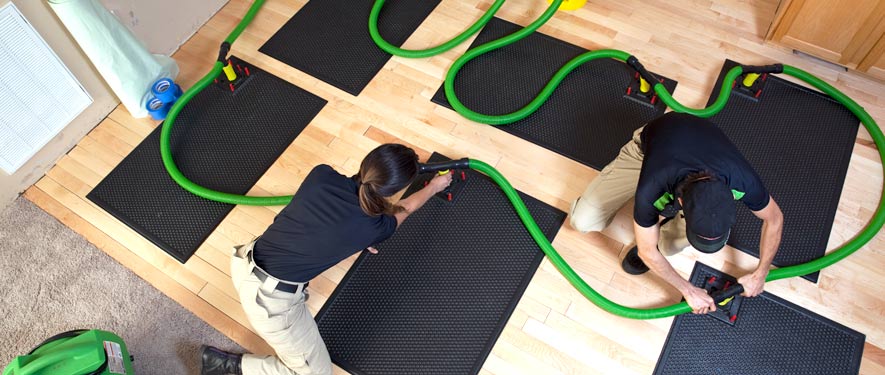
Step 4: Drying and Dehumidification
Our Water Damage Restoration Process
When porous building materials like wood and drywall retain water it can cause the materials to break down, warp, or allow mold to grow. Even after the bulk of the water has been removed from a home or business, damage can still advance. This is why our state-of-the-art equipment and advanced techniques are so important. We are able to remove all moisture from the property and ensure everything is completely dry. Our monitoring equipment allows us to track progress and make adjustments as needed to get your home or business back to normal as soon as possible.
Drying / Dehumidification
Our Professionals will use room measurements, temperature, and relative humidity to determine the optimal number of air movers and dehumidifiers to dry your home or business. We’ll carefully monitor the progress using moisture meters until the materials return to acceptable drying goals.
- Use Dehumidification Equipment
- Use Monitoring Equipment to Track Progress
Monitor Floor and Walls
We check the moisture levels to monitor the drying process.
- Monitor Floors
- Monitor Walls
Drying Equipment
- Industrial-grade dehumidifiers help prevent secondary water damage like swelling and warping of floors, walls, and furniture.
- High-speed air movers create airflow across walls, carpets, pads, and furniture, which accelerates the evaporation of moisture.




 24/7 Emergency Service
24/7 Emergency Service


